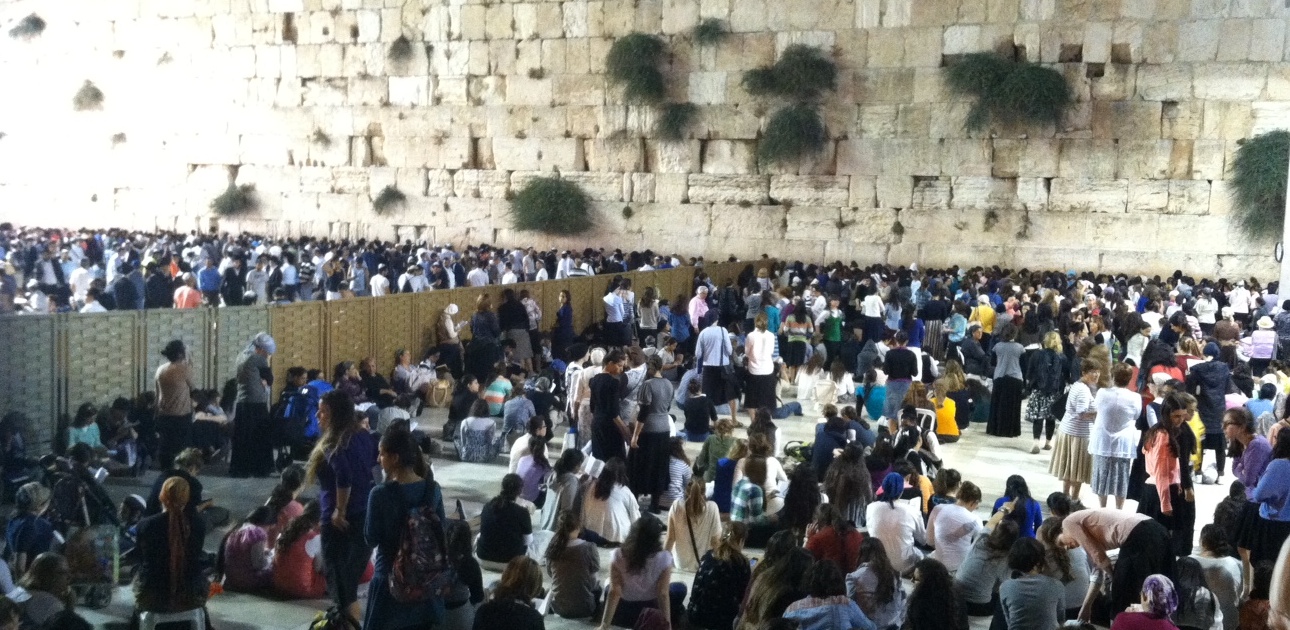Yesterday, Jews around the world observed Tisha B'Av, a fast day commemorating half a dozen Jewish tragedies, the most significant being the destructions of the First and Second Temples in Jerusalem. As I am in Israel, I determined it would be most poignant to spend the fast day in the Old City of Jerusalem and visit the Kotel, the remaining wall of the Temple courtyard. Also called the Western Wall and the Wailing Wall, it is the closest location to the Temple where modern-day Jews can worship. When I went there on the night of the fast (Jewish days start the night before) I presumed I would find hundreds of people sobbing for the destroyed Temple.
While there were dozens of people sitting on the ground, a Jewish mourning practice, I saw only one woman sobbing as she clambered to pour out her heart at the Wall. The Kotel was busy but not packed, and instead of people mourning individually I found a large group had gathered to sing together dirges about the rebuilding of the Temple. In this joining together, people saw friends and despite the fast day laws dictating against pleasantries in conversation they gave hugs and chitchatted, introducing old friends to new ones.
Indeed this is a more appropriate observance of this fast day than somber silence. It is said that whereas the First Temple was destroyed because of religious digressions, the Second Temple was destroyed because of baseless hatred, a sin of much greater significance and the spiritual reason the Temple has not been rebuilt.
This story is told: A party was held in 68 CE with all the important people in the ancient Jewish world invited. The host sent a messenger to invite his friend Kamtza but the messenger, mishearing, invited the host's enemy Bar Kamtza. Thinking the host wanted to reconcile, Bar Kamtza came to the party. When the host saw Bar Kamtza he tried to throw him out. Bar Kamtza pleaded to not be embarrassed in front of all the assembled dignitaries, offering to pay for his meal at the party. When that was refused, he offered to pay half the cost of the lavish party, then for the entire party, anything to be spared the great embarrassment of being thrown out. The invited sages and dignitaries looked on yet none spoke up for Bar Kamtza's dignity. After he was expelled from the party, Bar Kamtza went to the Romans and convinced them the Jews were planning to revolt, leading to the destruction of the Second Temple and the exile of the Jews from the land of Israel at the hands of the Romans.
The Second Temple was destroyed because of baseless hatred between Jews. Accordingly, the means for redemption must be for we Jews to come together despite our differences and realize our oneness. This redemption is not merely the physical reconstruction of what the Romans demolished; it requires non-physical acts of building that take place through introspection. Indeed, Tisha B'Av observance does not take place solely at the Kotel, but is commemorated by Jews everywhere; the Wall is merely a reminder of what we no longer have. We will realize ourselves to be redeemed when we have learned to live together as righteous people. Reach out a hand, help others, and help bring the world closer to a time of peace and redemption.
